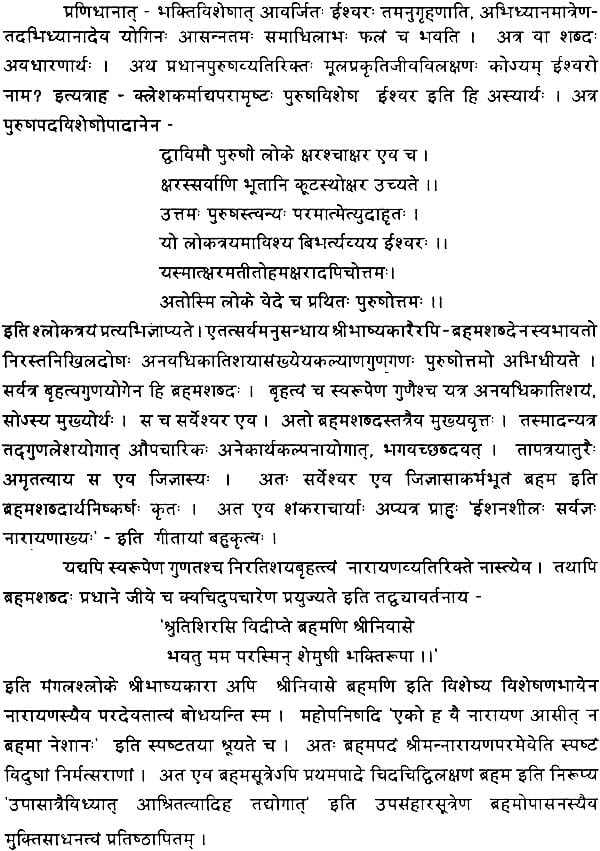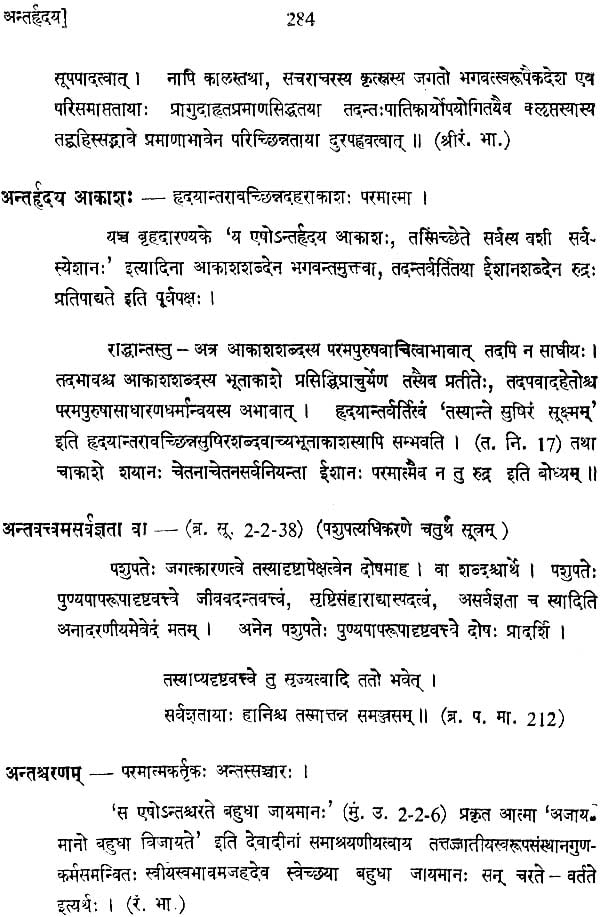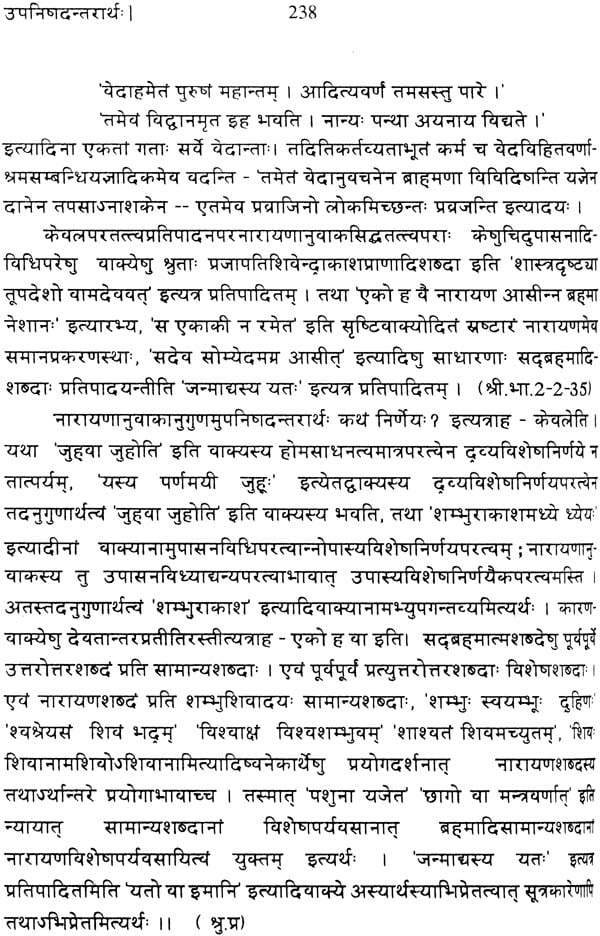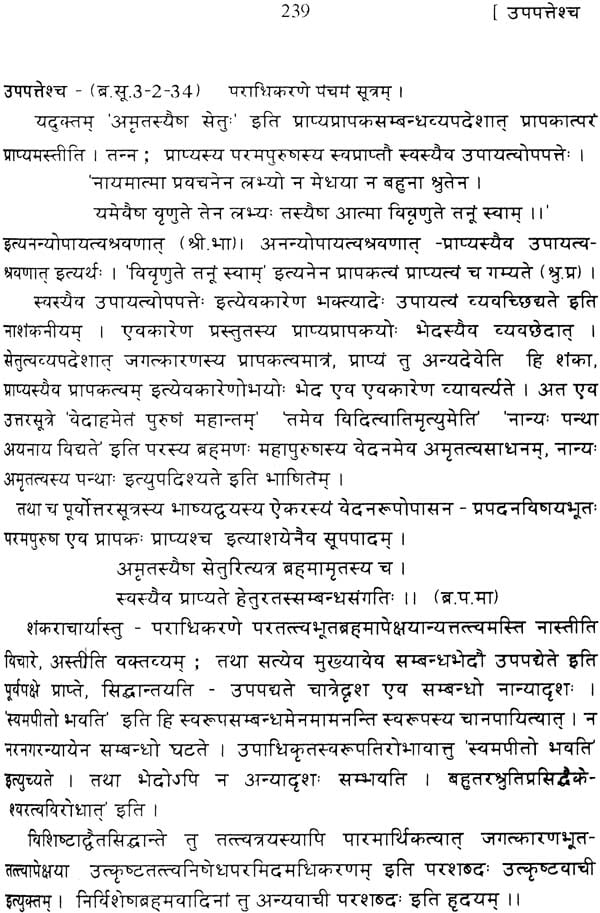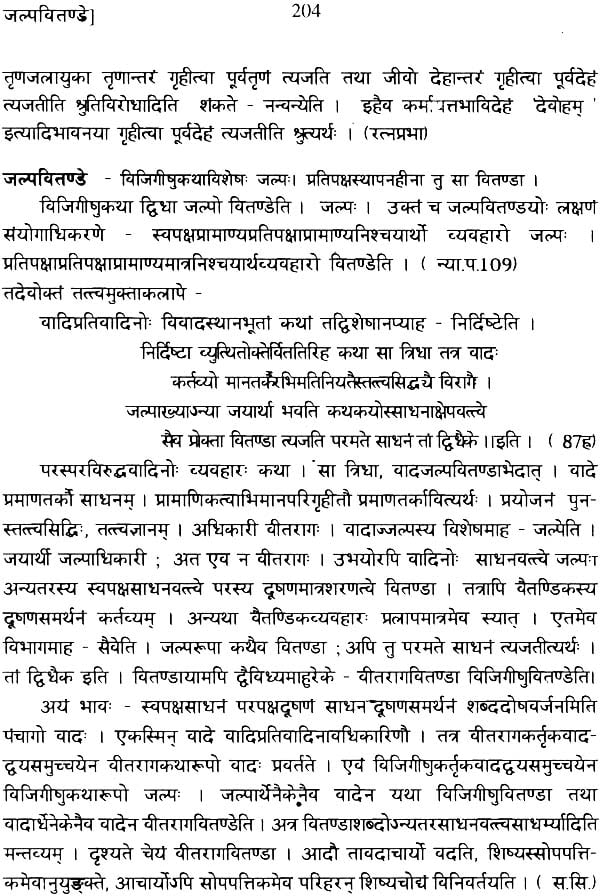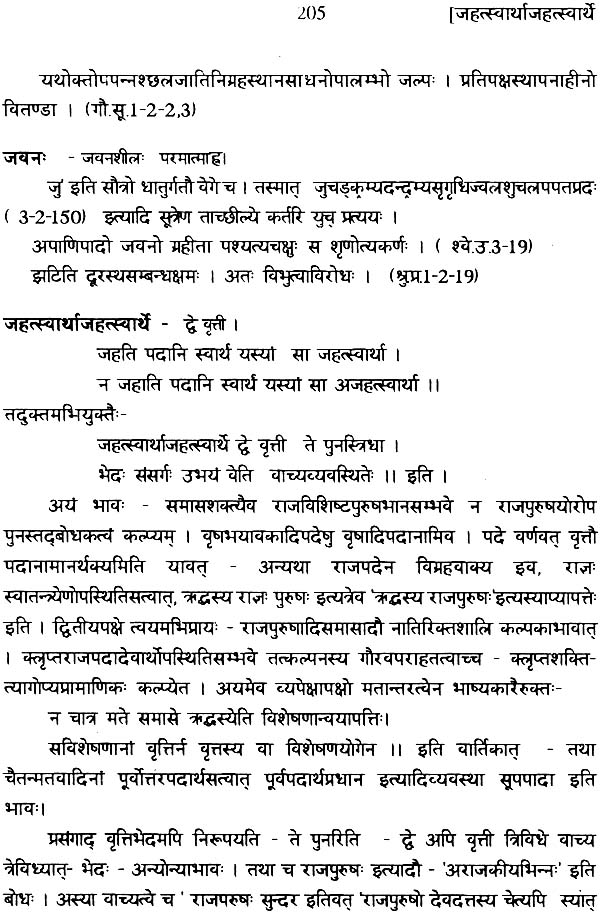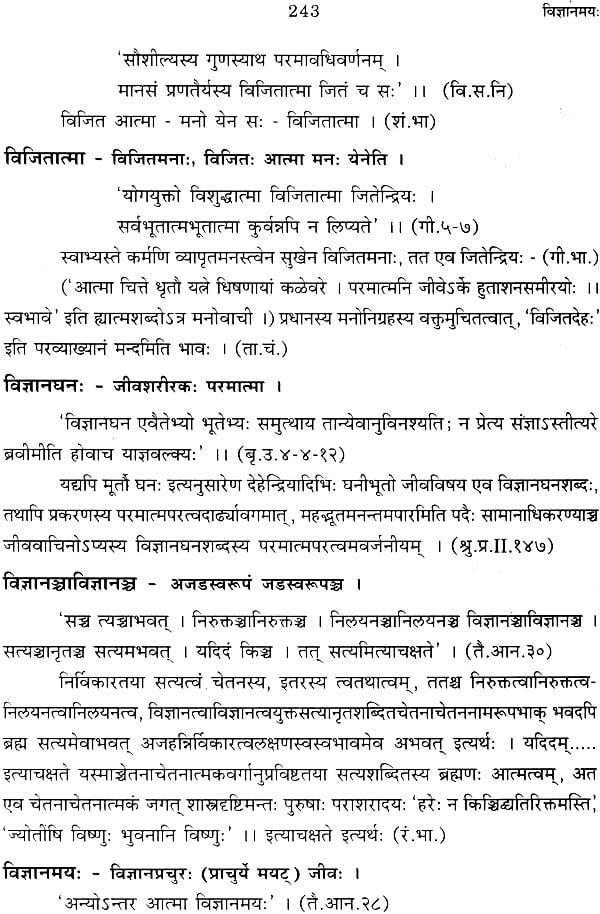विशिष्टाद्वैतकोश: Visistadvaita Kosha - An Old and Rare Book (Set of Ten Volumes)
Book Specification
| Item Code: | NZF910 |
| Publisher: | Academy of Sanskrit Research, Melkote |
| Language: | Sanskrit Only |
| Edition: | 1983 |
| Pages: | 5075 |
| Cover: | Hardcover |
| Other Details | 10.0 inch X 7.5 inch |
| Weight | 10.70 kg |
Book Description
Volume 1:9788185929361
Volume 2:9788185929415
Volume 3:9788185929637
Volume 4:8185929211
Volume 5:8185929327
Volume 6:8185929343
Volume 9:9788185929934
Volume 10:9788185929941
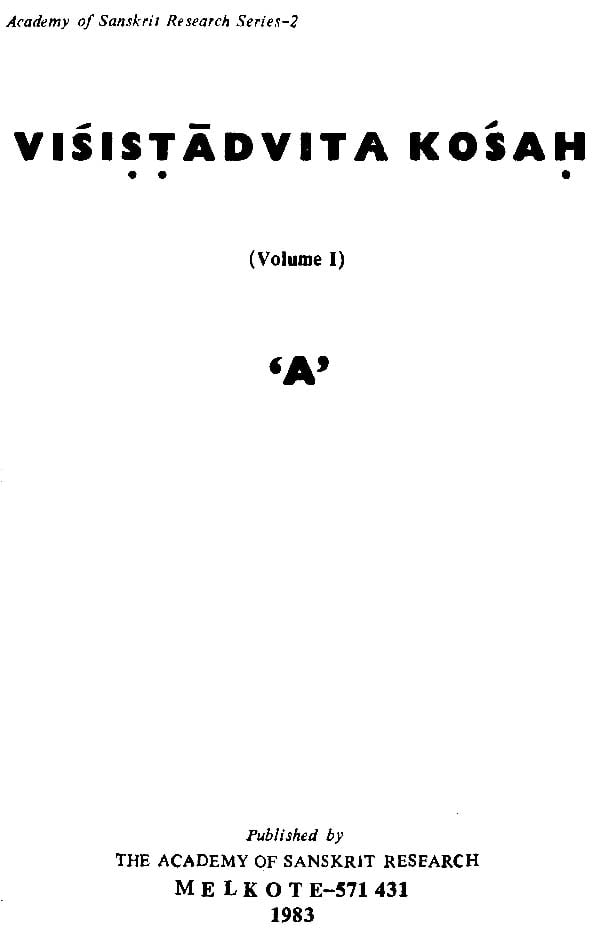
The Academy of Sanskrit Research was establish by the Government of Karnataka in the 1976 with the main purpose of carrying out research work in the field of Vedanta and its comparative study with other system of thought (East & west). Accordingly the Academy launched several programmes for specialization in the field of Vedanta. As a result of this it is bringing out its first publication viz, Visistadvaita kosa n Sanskrit. This project is aided by both the state of central Governments. It is purposed to bring out this Visistadvaita Kosa in ten Volumes of approximately 500 pages each, we are happy to place the first volume of Visistadvaita Kosa consisting of technical terms beginning with the alphabet “A” in the hands of the Readers.
In this work information from more than hundred works pertaining to the philosophy of Visistadvaita have been collected. To help comparative study the concept in other systems of Vedanta have been introduced, whenever necessary. I hope this Visistadvaita kosa, first publication of the Academy in Sanskrit, will help the research scholars traditional pundits and also scholars in general who desire to know the different concept of Visistadvaita philosophy. Hope the scholarly world will receive this volume in its proper perspective.
I am highly thankful to Sri S. M. S. Varadachar, project Leader, Visistadvaita Kosa project, his colleagues Sri N. Venkatachar , Sri E. J. Selvapillai, Sri M. B. Parthasarathy Iyengar, Sri as. Am. Aveera raghavachar, sri M. K. Srinivasa Iyengar, Sri S. Narasaraja Bhattar, Kum. M. A Rukminiamma, Kum. M. V. Savithri, Kum. M. R. Hemalatha and others scholars who have assisted him in preparing this volume. My thanks are due to prof. S. S. Raghavachar, Chairman, Scrutiny Committee, and Sri K. S. Varadachar, Member Scrutiny Committee, who have rendered valuable service by going through the manuscripts and giving invaluable suggestions for the successful implementation of the project. I am grateful to Messr. Jayanthi Printers, Mysore for the neat execution of the printing work. I am failing in my duty, if I do not thank the Government of Karnataka and the Government of India who have given substantial financial assistance for the implementation of this project. My humble regards to the various mathadhipathis and Vidwan Ramanuja Tatachariar who have blessed this blessed this venture in its various phases. I am grateful to the Managing Committee in General, Secretary Sri Ramesh Kumar, I. A. S. in particular for their continued encouragement in the successful completion of this work.
Knowledge is unlimited. It is vast and unfathomable like an ocean. It is impossible for a man to master all the branches of knowledge in the short span of his life. According to a saying in Sanskrit ‘Man can master only one branch of knowledge in his life-time’.
In the fast moving modern world, man hardly finds any time for the detailed and in-depth study of any branch of knowledge, But for a man endowed with intellect the thirst for knowledge is insatiable- Hence he tries to find some time for the acquisition of knowledge in the midst of his multifarious activities.
More knowledgeable person conveys his knowledge to the less knowledgeable through the medium of language only as it is the best medium of communication. Hence, in the acquisition of knowledge language plays a very important role- Language consists of words and phrases. Knowing correct interpretation of words and phrases of a work is a must for acquisition of knowledge.
Sanskrit literature occupies a pre-eminent position among the literatures of the world. Sanskrit literature comprises of two distinct periods viz., Vedic and Post-vedic, the former comprising works written in ancient form of Sanskrit.
Vedic literature begins with Rgveda and extends through the other three viz., Yajus, Sama, and Atharva Veda with their Brahmanas, Upanisads and Sutras. Post-vedic literature comprises of the code of Manu and other subsequent law books and extends through the six systems of philosophy especially the Vedanta systems, the vast grammatical literature: the immense epics, the lyric, erotic and didactic poems the Niti-sastras with their moral tales and apothegms, the dramas, the various treatises on mathematics, rhetoric, prosody, music, medicine etc. At last we come to the eighteen Puranas with their succeeding Upa-puranas and the more recent Tantras. No one person, indeed, with limited powers of mind and body can hope to master more than one or two departments of so vast a range in which scarcely a subject can be named, not furnishing a greater number of texts and commentaries or commentaries on commentaries.
Long ago Yaska collected and compiled the difficult words in the Vedic language which is called Nighantu. Further he explained those terms clearly with their etymology giving various possible interpretations .This part is caned Nirukta. Thus Yaska laid the foundation for writing dictionaries to facilitate the clear understanding of Vedic treatises.
Similarly, there was great need for a dictionary explaining words of the classical Sanskrit language. There are words having different meanings. Many meanings can be conveyed by one word also. It is difficult to grasp them by merely studying their usage in ‘ certain contexts. So dictionaries are necessary to decisively know the• meanings of the words. The importance of a dictionary for the study of any branch of knowledge could be realised by the dictum of our forefathers that every student of sanskrit should know the Amarakosa by heart.
After the advent of westerners in the field of Sanskrit literature, several dictionaries were written arranging the words of Sanskrit literature in the alphabetical order. This method of arranging the words in the alphabetical order which facilitates ready reference was followed by many of the sanskrit scholars also. Vacaspatya Kosa of Taranatha Tarka Vacaspati ‘was written following the pattern of Monier Williams’ Sanskrit-English Dictionary. Sabda kalpadruma is another such encyclopaedia. Vacaspatya Kosa and Sabdakalpadruma explain most of the words in Sanskrit literature quoting relevant passages and their references.
But these Kosas (encyclopaedias) could not cover the entire gamut of many sastraic works found in Sanskrit literature. Hence, as and when these sastras developed several Kosas (encyclopaedias) explaining many technical terms and concepts of these sastras came into existence. Nyaya Kosa, Dharma Kosa Astangahrdaya Kosa, Mimamsa Kosa, Srauta Kosa are some of them.
After the 12th century the system of Visistadvaita Vedanta developed in leaps and bounds. In addition to several independent works, commentaries and sub commentaries were written to explain the works of the Acharyas. A beginner had often to struggle hard to understand the difficult technical terms during the course of his study.
So, attempts were made to writ e Kosas explaining the technical terms of Visistadvatta. First among these is ‘Adaiyavalandan Akaradi’ explaining old and rare technical terms used in the Tamil commentaries on the prabandhams of Alwars. This work is printed in Telugu script. Hardly it could satisfy the needs of a student of Visistadvaita.
Hence, another work ‘Sampradaya Akaradi’ came into existence explaining many of the technical terms found both in Tamil and Sanskrit Vedanta works. In this work interpretations and meanings of terms are given in Tamil. The Manipravala language used here is crisp and precise. It helps the beginner to understand many of the technical terms of Visistadvaita clearly. The only drawback of this Kosa work is that it is written in Tamil language and printed in Telugu script. For a pure Sanskritist this is of little use.
With the main idea of solcving problems of the students of Visistadvaita. His Holiness Sri Ahobila Jeeyar Swamiji was anxious to bring out a Visistadvaita kosa, an exhaustive dictionary of Visistadvaita philosophical terms which would contain the connotations from a large number of technical texts of Visistadvaita. Every term undergoes changes in meaning in different schools of thought and different. branches of literature. Changes in meaning of words are bound to happen even in the works of successive generation of teachers of the same darsana. This is a universal phenomenon. If the evolution of the meaning of terms is not known, it will definitely lead to misinterpretation and conjectures which have no place in knowledge. In this context it becomes absolutely necessary to supply a reference book which would contain all the different meanings and convolutions of each term giving the source and authority for each one of the usages.
Panditaraja D. T. Tatacharya, M. O. L, under the patronage of His Holiness Sri. Ahobila Jeeyar Swamiji spared no efforts to bring out such a Visistadvaita Kosa. This is remarkable for its neat execution. This has laid down the guidelines for the Visistadvaita kosa which is being published by our Academy. The author himself has mentioned that he could not do full justice to the work on hand due to limited financial resources and inadequacy of the number of scholars who assisted him. Hence, The Academy of Sanskrit Research has ventured to take up the preparation of an exhaustive Visistadvaita Kosa in ten volumes of 500 pages each.
The Academy cannot claim that all these terms and explanations belong to it as the meanings of words and the words of a kosa can scarcely be proved by its compilers to belong exclusively to themselves. It is not the mere aggregation of words and meanings but the method of dealing with them and arranging them, which gives a Kosa the best right to be called an original production.
In saying this, we are not claiming any superiority for our method over that of the great scholars who have written Sampradaya Akaradi and Visistadvaita Kosa, nor are we detracting one whit from the tribute and admiration which we and other writers of encyclopaedia are always desirous of rendering to the colossal monument of industry and scholarship represented by their work. Now, we are merely repeating our claim to the production of a Visistadvaita Kosa on a wholly unique plan the utility of which has been proved by experience.
An unavoidable cause of delay has been the unlooked for amount of labour involved. First it was envisaged to bring out the Visistadvaita Kosa, in ten volumes containing 1,500 techninical terms each. Now the number of technical terms has swelled to 20,000. The delay in publishing the 1st volume is due to the fitting of the new matter into the old according to the plan, verification of the sources and meanings, revision and re-revision of printed proofs.
It would of course, be unreasonable to look for perfection in the result of our combined efforts. The law of liability to err is especially applicable in the preparation of such encyclopaediac works. Nor are the imperfections of this volume ever likely to become better known to the most keen sighted critics than they are to the compilers themselves.
It is said of the author of a well known dictionary that the number of mistakes which his critics discovered in it, were to him a source of satisfaction rather than annoyance. The larger a work, he affirmed, the more likely it was to include errors, and a hypercritical condemnation of these was often symptomatic of narrow-mindedness which could not take in the merit of any great performance as a whole.
Without having recourse to this convenient way of discomfiting critics of the "chidranvesin" type, and without abating an iota of justifiable confidence in the general trustworthiness of the present Kosa its compilers can yet be keenly alive to its thoroughly human character.
At all events we feel sure that we may affirm that we have earnestly striven to secure for this volume the possession of four principal characteristics, viz., 1. Scholarly accuracy, 2. Practical utility, 3. Lucidity of arrangement designed to set forth, as clearly as possible the development of concepts and interpretations- 4. Completeness and comprehensiveness, atleast to the fullest extent attainable in the latest state of research in Visistadvaita.
In 1983, the Academy of Sanskrit Research brought out the first volume of the Visistadvaita Kosa and we now have the happiness of placing in the hands of the readers the SECOND VOLUME of the Kosa. The Academy was estanblish by the Government of Karnataka in the year 1976. The main purpose of the Academy is to carry out the research in the field of Vedantha for the comparative study of all system of thought, East and West in relation to Visistadvaita Vedantha. The publication of Visistadvaita Kosa n ten volumes is one of the several programmes launched y the Academy. This project like the Academy itself is being aided by both the State and Central Governments.
The Kosa has been compiled by collecting information from nearly 250 works pertaining to the philosophy of Visistadvaita. In order to prepare the ground for comparative study with other system of Vedantha concept form those systems are introduced wherever necessary. The main is that the Kosa should be helpful to all research scholars, traditional pundits and also scholars in general by providing an encyclopeadia which is easy to refer.
A large number of scholars and workers have helped in the preparation of this volume, as in the case of the earlier volume. All of them have earned he deep gratitude of the Academy. In particular, the very distinguished services renderd by Vidwan Sri S. M. S. Varadacharya, Project Leader, needs to be applauded.
We are also extremely grateful to the Scrutiny Committee comprising of Prof. N. S. Ramanujatatachariar and Pandits Kari Ramanujacharya, S. N. C. Raghunathachariar and K. S. Varadacharya. In particular the meticulous examination made by Panditaratnam K. S. Varadacharya of Mysore and the advice renderd by him have been invaluable.
It is the Academy’s hope that this will be of significant help to the students of Visistadvaita as well as scholars interested in the comparative study of different systems of Indian philosophy. It provides ample information on all technical terms which occur in Visistadvaita works and the readers is easily able to find out the different interpretation and explanation of these terms since they are all brought to one place. The readers is thus saved precious time and energy since one does not have to study many Visistadvaita works to ascertains the different interpretations. To the researchers this work will we hope prove helpful since he or she would be able to discern the development of Visistadvaita thought through the many readings cited, apart from the particular interpretation cited in the book are explicitly mentioned and this will enable scholars desirous of knowing more about the concerned technical terms of study the original and add to their knowledge. My colleagues and I fervently hope that the Kosa will win its way, the hearts of learned Sanskrit scholars and also help aspirants of knowledge to the greatest possible extent.
The Academy takes pleasure in publishing the Second Volume of Visistadvaita Kosa. Many scholars and wellwishers have tendered valuable advice for improving the quality of this series. The Academy offers its sincere thanks to all such friends. We have taken enough precautions to incorporate all such healthy suggestions in this volume. We depend upon the scholars view I future also for effecting further improvements and therefore welcome all comments from our esteemed readers.
We have been able to cover technical terms beginning with two more letters namely, and only in this volume of 500 pages. As already narrated in the introduction to the first volume the Academy has stuck to its ideals of scholarly accuracy, comprehensiveness, clarity of concepts and interpretations and practical utility to the users, as far as possible.
The guidelines in preparing the Kosa have already been enunciated clearly in the introductory portion of the first volume; Hence, the same is not repeated here again. The Academy has referred to 74 more source-works in addition to the 172 source-works and 12 lexicons already enumerated in the first volume. It is our duty to thank all such institutions and individuals who have produced these source-works wherefrom we have drawn useful information for this volume.
We are ever grateful to the purposeful and timely guidance rendered by the President, Secretary and the other Members of the Managing Committee of the Academy.
Vidwan S. M. S. Varadacharya has been striving hard not only in publishing the present volume but the entire series as well. Press copy of Volume HI is already taken up for publication. The teams of research associates have been incessantly working -on this project. We are indebted to their sincerity of purpose and we hope to complete the publication of this series early with their continued cooperation. We remain always indebted to the scholars of the Expert Committee viz., Dr. N. S. Ramanujatatachariar of Tirupati, Pandit S. N. C. Raghunathacharya of Warrangal, Pandit Kari Ramanujacharya of Simhachalam and Panditharatnam K. S. Varadacharya of Mysore for their very valuable contribution in improving the manuscripts with their rich experience in different Shastras. Our thanks are also due to those Scholars who have lent their helping hand directly or indirectly in bringing out this volume. We are highly thankful to M/s. Vivek Printers of Mysore for their continued cooperation in .printing this works neatly.
Further, we record our sincere thanks to the Government of Karnataka and the Government of India for their financial assistance for the implementation of this project. We hope that both the Governments will continue to finance this project till its completion.

